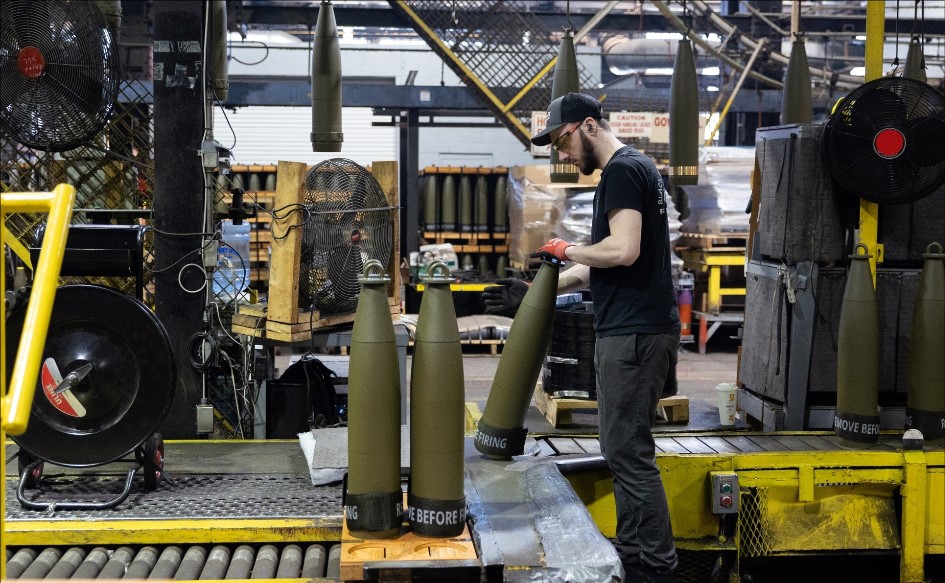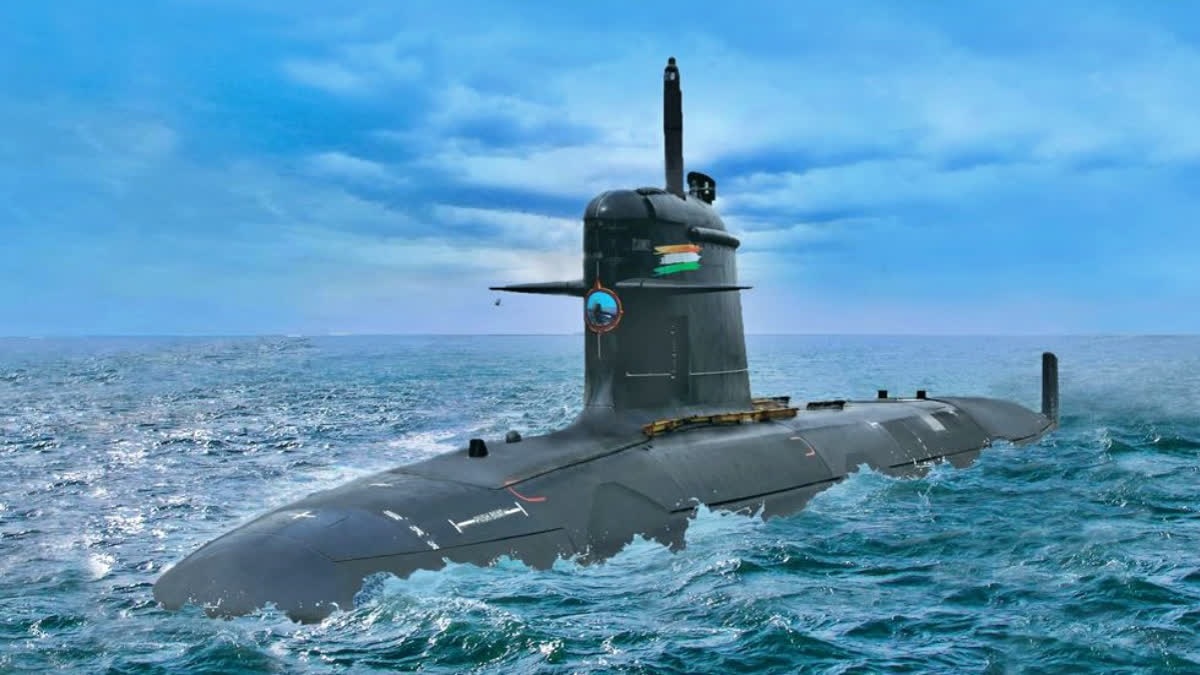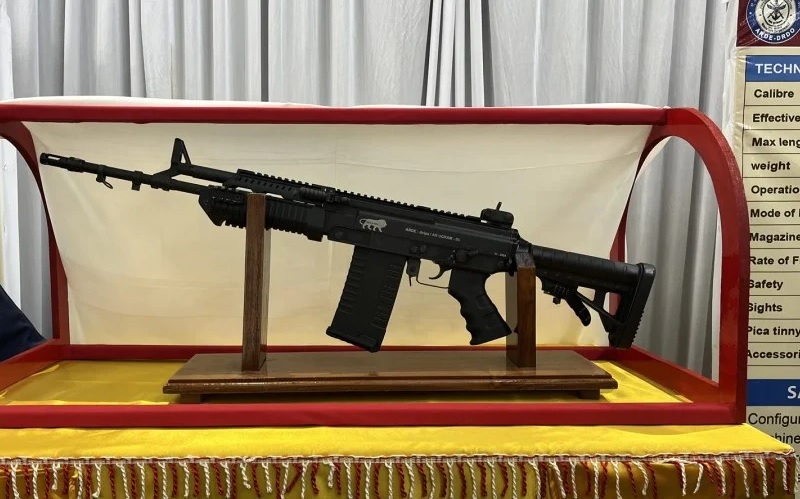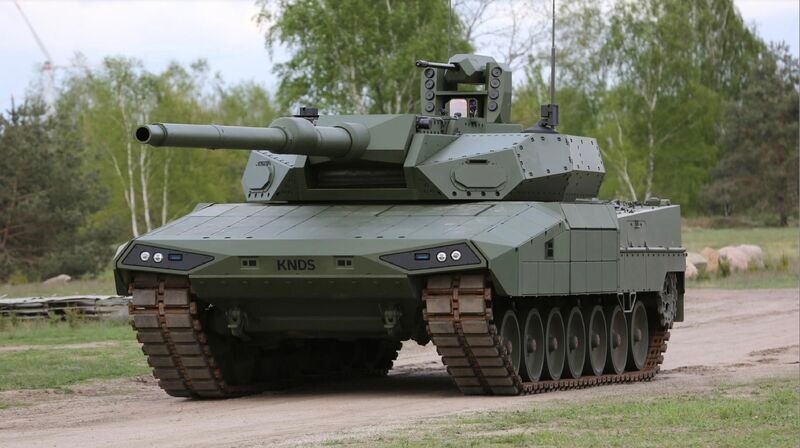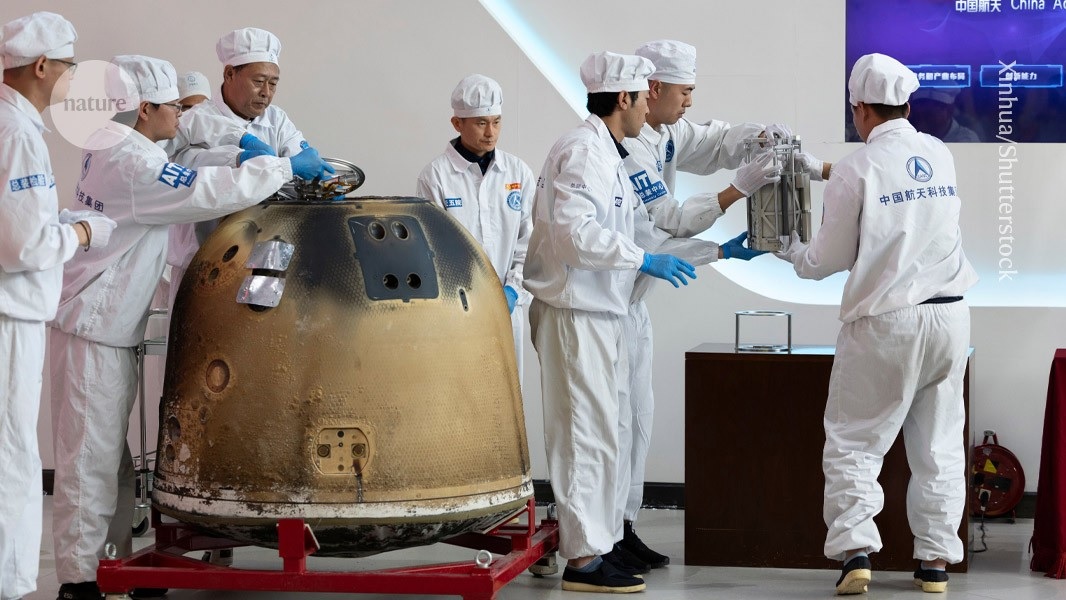World
In a shocking incident near Moscow, a senior Russian general was killed when a parked car exploded in what investigators believe was a deliberate and highly coordinated attack. The victim was identified as General-lieutenant Yaroslav Moskalik, who served as the deputy head of the main operational directorate of Russia’s military General Staff—a central body responsible for directing army operations, particularly those tied to Russia’s offensive in Ukraine. The explosion occurred on a quiet Friday morning in the town of Balashikha, just east of Moscow. Residents reported a powerful blast around 10:45 a.m. local time that shook the neighborhood. Eyewitnesses described the scene as terrifying, with one local saying, “The explosion was very strong—it even gave me heart pain.” Police quickly sealed off the area, as emergency services and investigators swarmed the site. A white Volkswagen Golf, which was parked outside a residential building, was ripped apart by the explosion. Footage later released showed the vehicle’s front completely destroyed, with debris scattered across the street. Investigators confirmed that the blast was caused by an improvised explosive device (IED), carefully constructed to inflict maximum damage using metal fragments. Surveillance video showed the moment the car exploded, just as a person approached it. The Investigative Committee of Russia announced the launch of a murder investigation, while Russian foreign ministry spokesperson Maria Zakharova called the incident a terrorist attack. Although the authorities have not officially attributed blame, some Russian officials, including the leader of North Ossetia, Sergei Menyailo, hinted that Ukrainian agents might have been behind the bombing. He remarked, “People like Yaroslav stick in the enemy’s craw,” suggesting that Moskalik’s role in military planning made him a likely target. Ukrainian authorities have neither confirmed nor denied involvement. However, over the past three years, several similar high-profile attacks have targeted individuals connected to Russia’s military operations in Ukraine. Ukraine has previously referred to such targets as “legitimate,” viewing them as retaliation for Russia’s continued assault on Ukrainian territory. Investigative reports suggest the bomb-laden car may have been parked in the area for several days. It was allegedly purchased a few months ago by a man from Sumy, a city in northeastern Ukraine, and equipped with surveillance equipment—indicating a level of planning consistent with intelligence operations. General Moskalik, aged 59, had a long career in the military and was promoted to the rank of general-lieutenant by President Vladimir Putin in 2021. He had also represented the Russian military during ceasefire negotiations with Ukraine back in 2015, during the earlier phase of the Donbas conflict. The department Moskalik served in was known for its central role in planning Russian operations in Ukraine. His killing mirrors past assassinations such as the car bombing of Darya Dugina in August 2022 and the cafe explosion in Saint Petersburg that killed military blogger Vladlen Tatarsky in April 2023. In some of those cases, Kyiv took credit or signaled approval, framing them as acts of wartime justice. The incident has again raised questions within Russia about the effectiveness of its domestic security apparatus. Following a similar high-level killing last year, President Putin openly criticized security failures, saying, “We must not allow such very serious blunders to happen.” For now, while Moscow mourns the loss of another top figure in its military ranks, the broader message seems clear: the shadow war between Russia and Ukraine has reached deep into Russian soil, and the targets are becoming ever more high-profile.
Read More → Posted on 2025-04-25 16:58:11World
The recent terror attack in Pahalgam, Jammu & Kashmir, has shocked the world and drawn a powerful comparison from an influential voice in the global Jewish community. Jason Isaacson, the Chief Policy and Political Affairs Officer of the American Jewish Committee, described the incident as "brutal" and "horrific," likening it to the October 7, 2023, attack by Hamas on Israel—a day that left deep scars in global memory. On October 7, Hamas militants launched a coordinated and deadly assault on Southern Israel, killing over 1,200 people and taking more than 200 hostages. Drawing a parallel, Isaacson said the Pahalgam incident, where terrorists opened fire on tourists at the peaceful Baisaran meadow, bore "echoes" of that same kind of horror. Twenty-six lives were lost in the Kashmir attack, including one Nepali citizen, while many others were seriously injured. Isaacson spoke out passionately, stating that what unfolded in Pahalgam was not just an attack on people enjoying a vacation—it was a targeted act of violence, singling out Hindus. He emphasized that this kind of religiously motivated terrorism is tragically familiar, and resonates with what Jewish communities around the world have endured from groups like Hamas and Hezbollah. He said, “That attack [October 7] echoes in my mind as I see what has happened in Jammu & Kashmir. It has shaken India to the core and horrified people worldwide.” Isaacson drew a disturbing but important connection between the methods and ideologies of Hamas and Lashkar-e-Taiba (LeT), the group suspected to be behind the Pahalgam attack. He explained that both outfits thrive on the idea of demonizing others purely based on their religious identity, portraying them as enemies to be eliminated. He praised Prime Minister Narendra Modi’s determination to eradicate terrorism from Indian soil and assured that the global community, including the United States, stands firmly with India in this fight. “PM Modi has pledged to root out these terrorists, and he has the full support of my country and other friends of India around the world,” he added. Isaacson also hinted strongly at possible involvement from across the border. Without directly accusing, he pointed to the likelihood of logistical, financial, or ideological support for such attacks from elements within Pakistan’s military, intelligence services, or broader society. He remarked, “It doesn't take too large a stretch of imagination to think there may be some Pakistani involvement.” The Pahalgam tragedy is being seen as the most devastating attack in Kashmir since the 2019 Pulwama blast, where 40 CRPF personnel were killed. The brutality of the Pahalgam assault, especially its targeting of civilians based on religious identity, has sparked outrage and sorrow across India and beyond. Isaacson’s comparison with the October 7 Hamas attack is a reminder that terrorism, no matter where it strikes, speaks a common language of hate and division. His words also underline a growing sense of global solidarity against such acts, as countries and communities begin to recognize the shared pain and collective responsibility in standing against terror.
Read More → Posted on 2025-04-25 16:52:48World
In a significant step to strengthen its artillery firepower, the US Army has opened a brand-new 155mm ammunition facility in Camden, Arkansas. Developed in collaboration with General Dynamics Ordnance and Tactical Systems, this facility is designed to produce high-explosive 155mm artillery projectiles, which are a crucial part of modern battlefield operations. This new plant will handle the Load, Assemble, and Pack (LAP) stage of ammunition production — essentially the final stage where the components of the shell are brought together, filled with explosive material, and packed for delivery. The facility will run two active production lines capable of manufacturing around 50,000 rounds per month. This is part of a broader effort by the US Army to ramp up the production of critical munitions and meet rising global demands. To make production faster, safer, and more efficient, the facility is equipped with advanced automation systems and digital quality tracking technologies. These features ensure that every shell produced meets strict quality standards. Additionally, a modern next-generation air-cooling system has been introduced to cure explosives more efficiently while using less water, an important improvement over older cooling methods that were more resource-intensive. The opening of this facility is also a big win for the local economy. Around 185 new jobs will be created in the Camden region to support the operations of the plant, offering skilled employment opportunities and contributing to regional growth. This move is part of the US Army’s larger plan to increase the production of 155mm projectiles to 100,000 rounds per month. Since 2022, the Army has quadrupled its ammunition production capacity, responding to both operational needs and growing international security challenges. Initially, this production boost was aimed at supporting Ukraine in its ongoing conflict with Russian forces. Recognizing the importance of a steady and reliable ammunition supply, the Army expanded its efforts by signing deals with companies like Olin Winchester to build another ammunition facility in Missouri for the production of Next Generation Squad Weapon (NGSW) rounds. Additionally, defense company BAE Systems joined forces with Hanwha Defense to upgrade the Radford Ammunition Plant, a critical site for producing missile propellants, artillery ammunition, air defense munitions, naval weapons, and explosives. With the Camden facility now operational, the US Army has taken another important step in ensuring its troops have the firepower readiness needed for current and future conflicts. The combination of modern technology, increased production capacity, and strong public-private partnerships continues to reshape America’s defense manufacturing landscape.
Read More → Posted on 2025-04-25 16:47:58India
Mazagon Dock Shipbuilders Limited (MDL), India’s premier submarine construction yard, has stepped forward with a bold and strategic move—designing its own conventional diesel-electric submarine for the Indian Navy’s future Project-76. This marks the first time MDL is independently developing a submarine from the ground up, without relying on a foreign partner or a government research body. This initiative directly places MDL in friendly but firm competition with the Defence Research and Development Organisation (DRDO), which is also working on its own indigenous submarine design under the same program. Project-76 is envisioned to produce a new line of advanced submarines equipped with Air-Independent Propulsion (AIP), and aims to serve as a major step in India’s push toward self-reliance in defence manufacturing. MDL confirmed on March 18, 2025, that its internal design team is actively engaged with the Indian Navy to shape a proposal that fits the service’s long-term needs. The company hopes to present its design around the same time as DRDO’s, ensuring that the Navy has two separate but homegrown options to choose from—both tailored to Indian requirements. What makes MDL’s move particularly significant is its rich legacy in submarine construction. Based in Mumbai, MDL has built both the German Shishumar-class submarines in the 1980s and the French-designed Scorpene-class submarines under the ongoing Project-75. It has already delivered five Scorpenes to the Navy, with the sixth nearing completion. The shipyard is also preparing to construct six more AIP-equipped submarines under Project-75I, in collaboration with Germany’s Thyssenkrupp Marine Systems (TKMS). This deep experience puts MDL in a unique position. While DRDO approaches submarine development from a research and systems design perspective—leveraging its work on nuclear-powered submarines and indigenous AIP technology—MDL brings decades of hands-on shipbuilding and integration expertise. This contrast sets the stage for a constructive competition that could ultimately benefit the Indian Navy. Interestingly, while DRDO has reportedly sought Cabinet approval and government funding for its design phase, MDL is taking a different route by financing its design work internally. This bold step underscores MDL’s confidence in its own capabilities, both technical and financial. The Indian Navy, which currently operates 16 conventional submarines (a mix of Kilo, Shishumar, and Scorpene classes), is in pressing need of modernization. Many of these boats are aging and will need replacement in the coming decade. The Navy aims to operate 18 conventional and six nuclear attack submarines by 2035. The availability of two competing Indian designs around that time could help avoid delays and offer more flexibility in fleet expansion. There’s also speculation that MDL’s new design could integrate valuable insights from its Scorpene program and its upcoming collaboration with TKMS on the German Type 212/214 platforms. Such features could enhance stealth, endurance, and weapon systems, making the submarine highly suited to India’s unique maritime geography. While some argue that DRDO and MDL should collaborate to conserve resources, others believe that healthy competition could actually push both teams to deliver better results—just as it has in defence programs in countries like the United States. Both organizations are leveraging their strengths: DRDO’s cutting-edge research base and its link with the Warship Design Bureau, and MDL’s practical, proven shipbuilding capability. As Project-76 takes shape, this parallel development race could become a landmark moment for India’s defence sector—one that exemplifies the spirit of ‘Atmanirbhar Bharat’ and brings the country closer to self-sufficiency in critical undersea warfare capabilities.
Read More → Posted on 2025-04-25 16:42:34World
Leidos has officially kicked off mass production of the Indirect Fire Protection Capability Increment 2 (IFPC Inc 2) launchers, a next-generation ground-based weapon system tailored for the US Army. This development marks a major step in strengthening America’s air and missile defense by filling the gap between short-range and strategic air defense systems. The IFPC Inc 2 launchers will be integrated into the Army’s advanced Integrated Air and Missile Defense (AIAMD) network. This plug-and-play compatibility means the launchers can seamlessly operate with other parts of the system, making the overall network more flexible and responsive to threats. Leidos' production push follows a massive $4.1 billion indefinite delivery/indefinite quantity contract awarded by the Army's Missiles & Space Program Executive Office. The agreement ensures a long-term supply of these systems along with essential support services. Initially, the production will begin at a low rate to smooth the process before ramping up to full-scale manufacturing. Under the current deal, at least 18 launchers are slated for production, with deliveries scheduled to continue through 2029. Larry Barisciano, who leads land systems at Leidos, emphasized the importance of this milestone. He said that the production order demonstrates the growing demand for the system’s capabilities and underlined Leidos’ commitment to protecting soldiers and vital infrastructure with swift, scalable, and precise solutions. The IFPC Inc 2 launcher is specifically built to counter emerging aerial threats such as unmanned aerial vehicles (UAVs) and cruise missiles. Its design includes an open architecture, enabling it to currently use the AIM-9X interceptor missile while also allowing room for the integration of new types of missiles in the future. This flexibility ensures that the system remains relevant as new technologies and threats emerge. Importantly, the launchers are expected to play a critical role in the US Indo-Pacific Command’s Pacific Deterrence Initiative, which aims to bolster military preparedness and deter aggression in the Indo-Pacific region. As tensions continue to evolve in that strategic area, the deployment of IFPC Inc 2 systems is seen as a timely reinforcement of US defense posture. In short, Leidos' move into mass production signals a big leap forward in modernizing the US Army’s air defense systems, with the IFPC Inc 2 set to become a key shield against future aerial threats.
Read More → Posted on 2025-04-25 16:34:34India
India’s Border Security Force (BSF), the primary guardian of the country’s land frontiers, has initiated rigorous trials of a new indigenous assault rifle named Ugram. This marks a significant step towards modernising the BSF’s firepower by potentially replacing the decades-old 5.56mm INSAS rifle, which has served the force since the late 1990s. Developed under the leadership of the Defence Research and Development Organisation (DRDO), in collaboration with Dvipa Armour India Private Limited, the Ugram is chambered for the 7.62x51mm NATO caliber — a powerful round known for superior stopping power and battlefield reliability. Why is the BSF Considering Ugram? The INSAS (Indian Small Arms System) rifle, despite being an important milestone in India’s defence manufacturing journey, has faced persistent issues over the years. Problems like frequent jamming in harsh environments, lack of firepower, and concerns raised by security personnel during operations in conflict zones such as Jammu and Kashmir have been well-documented. With evolving border security challenges — from countering drone incursions to preventing armed infiltrations — the BSF requires a weapon that delivers both power and dependability in diverse operational conditions. Ugram promises to address these gaps while supporting India’s ‘Make in India’ initiative by reducing dependence on foreign arms and promoting indigenous defence capabilities. Key Specifications of the Ugram Rifle Caliber: 7.62x51mm NATO Operating System: Gas-operated, rotating bolt Firing Mode: Semi-automatic and fully automatic Effective Range: Approximately 500–600 meters Magazine Capacity: 20-round detachable box magazine Overall Weight: Approx. 4 kg (unloaded) Barrel Length: Around 400–450 mm Material: Lightweight alloy and composite materials for improved durability Attachment Compatibility: Full-length Picatinny rails on top and sides for mounting optics, lasers, foregrips, and other tactical accessories Special Features: Adjustable buttstock, ambidextrous controls, enhanced recoil management Focus of the Trials The BSF has procured 10 Ugram rifles along with suitable ammunition for extensive field testing. These trials will assess: Accuracy and reliability in live-firing exercises Performance in adverse conditions such as high-altitude, hot deserts, and humid plains Ease of handling, particularly recoil control and balance during rapid firing Maintenance needs and durability under prolonged use Compatibility with modern attachments and optical sights Simulated exercises resembling counter-smuggling operations along the Punjab border, and anti-infiltration duties at the Line of Control (LoC) in Jammu and Kashmir, are likely to be part of this evaluation. A Shift Back to 7.62mm Caliber The Ugram rifle’s 7.62mm caliber marks a deliberate return to a heavier, more impactful round — the same size previously used in the Indian Army’s old SLRs (Self-Loading Rifles) before the 5.56mm INSAS was introduced. This move mirrors recent decisions by the Indian Army to acquire AK-203 rifles (7.62x39mm) and SIG-716 rifles (7.62x51mm) for frontline troops, reflecting a broader preference for greater stopping power against well-armed and determined adversaries, especially in rugged and hostile terrains. Supporting Make in India and Self-Reliance One of Ugram’s most strategic advantages is its completely indigenous development and production, eliminating reliance on foreign suppliers for critical components. This will not only reduce costs but also strengthen India’s domestic defence ecosystem and ensure a steady supply chain, vital during emergency situations. Since its unveiling at DefExpo 2024, the Ugram has attracted attention for its modern design and modular features, tailored specifically for India’s security forces. The Road Ahead If the Ugram successfully meets BSF’s stringent operational criteria, it could replace the INSAS rifle for the force’s over 265,000 personnel, significantly upgrading their small arms capability with a weapon built entirely on Indian soil. This decision would not only modernise BSF’s arsenal but also further India’s aim of becoming self-reliant in defence production, setting a precedent for other Central Armed Police Forces (CAPFs) to follow. As India faces ever-evolving security threats along its borders, the Ugram rifle could soon become a symbol of the country’s growing indigenous military-industrial strength and a dependable companion for those who stand watch over the nation.
Read More → Posted on 2025-04-25 15:59:15World
In a significant move reflecting shifting international dynamics, Japan has agreed to provide vital satellite radar imagery to Ukraine’s military intelligence agency. As the war in Ukraine continues and U.S. support faces periodic uncertainties, Japan’s involvement marks a notable development in Kyiv’s search for reliable intelligence allies. Japan's Kyushu University Institute for Q-shu Pioneers of Space (iQPS) has entered into an agreement to supply synthetic aperture radar (SAR) imagery to Ukraine’s Main Directorate of Intelligence (HUR). This cooperation was finalized after months of talks, which reportedly gained momentum in March when the United States temporarily suspended its intelligence-sharing activities with Ukraine. Synthetic Aperture Radar (SAR) is a powerful remote sensing technology that can produce detailed two- or three-dimensional images of objects and terrain, regardless of weather conditions or the time of day. Unlike traditional optical imaging, SAR systems can penetrate clouds, darkness, and smoke, making them invaluable in conflict zones. These images are crucial for tracking enemy troop movements, detecting hidden military installations, and assessing battlefield changes in real time. As part of the agreement, there’s a two- to three-month window for installing the necessary software and integrating Japan’s SAR data into Ukraine’s existing intelligence platforms. This collaboration will bolster Ukraine’s surveillance and targeting capabilities, offering a new layer of resilience as it navigates fluctuating international support. The need for additional intelligence support arose when the United States, a key supplier of military data to Ukraine, paused both intelligence sharing and weapons deliveries. Although this pause was later lifted following progress in ceasefire negotiations, it underscored Ukraine's vulnerability to geopolitical shifts. While other Western countries, including France and the United Kingdom, continue to provide critical intelligence, Washington’s brief freeze exposed gaps in Ukraine’s operational readiness and planning. Ukraine’s military heavily relies on communication systems like Starlink, operated by billionaire Elon Musk. With over 50,000 active Starlink terminals deployed in Ukraine, the service remains a backbone of battlefield communication. However, Musk’s outspoken criticism of military aid to Ukraine and his political affiliations have raised concerns about the long-term reliability of Starlink services for Kyiv. French satellite operator Eutelsat has expressed interest in expanding its presence in Ukraine, though it admitted it currently lacks the infrastructure to match Starlink’s operational footprint. Japan’s timely intervention through iQPS not only helps fill the intelligence void but also highlights a growing willingness among U.S. allies to play a more active role in supporting Ukraine’s defense. As global power dynamics shift and new alliances form, Kyiv continues to adapt its strategies to secure both military aid and intelligence capabilities from a broader coalition of partners. This cooperation between Japan and Ukraine signals the increasing importance of space-based surveillance systems in modern warfare and illustrates how geopolitical realities are reshaping the international response to the ongoing conflict in Eastern Europe.
Read More → Posted on 2025-04-25 15:54:42India
The Indian Army gave a powerful and effective response to unprovoked firing by Pakistani troops along the Line of Control (LoC) in Jammu and Kashmir on Thursday night. Despite the multiple ceasefire violations, no casualties were reported on the Indian side. This firing comes at a time when tensions between the two countries are already high. Just days ago, a deadly terror attack in Pahalgam on April 23 claimed the lives of 26 civilians, including one Nepali national. The incident shocked the country and triggered a strong diplomatic and strategic reaction from New Delhi. In response, India suspended the Indus Waters Treaty and reduced its diplomatic ties with Pakistan, signalling a serious shift in bilateral relations. According to military sources, Pakistani troops started "speculative firing" from several posts across the LoC, clearly breaching the ceasefire agreement in place. The Indian Army, known for its readiness in such situations, retaliated with equal force, sending a clear message that such provocations will not go unanswered. In a separate but related incident, the Indian Army also opened fire on suspicious movement near the LoC in the Mendhar sector of Poonch district on Wednesday night. A search operation was launched immediately to ensure there were no infiltration attempts from across the border. Though there were some mentions of possible action in Uri, reports specifically highlighted the incidents in Poonch and nearby sectors, with no confirmation of engagement in Uri at this time. These developments are unfolding against the backdrop of India taking stern measures against Pakistan, including the expulsion of diplomats and closing of cross-border movement points. Meanwhile, Pakistan has denied any role in the Pahalgam attack and has dismissed India’s claims as part of what it calls a “false flag operation.” Defence experts believe the situation could escalate further. With both countries being nuclear-armed, any military action carries serious risks. However, India’s recent moves suggest it may not hesitate to take strong actions such as cross-border raids or targeted airstrikes if provoked further. For now, the Indian Army remains on high alert along the LoC, determined to ensure peace on its side of the border while staying prepared for any future challenges.
Read More → Posted on 2025-04-25 15:51:04World
Estonia is taking a major step to strengthen its national defence capabilities by establishing a new state-owned company, Hexest AS, which will lead the development of the country’s first military explosives factory. The Estonian government has approved the creation of this company and given the green light to begin preparations for the plant's construction, marking a significant milestone in the nation's defence industrial ambitions. Hexest AS will be formally created in the coming weeks and handed over to the Ministry of Defence within six months. The initiative reflects Estonia’s growing focus on building local capacity for defence manufacturing and ensuring long-term security in a rapidly evolving geopolitical environment. According to Estonia’s Minister of Defence, Hanno Pevkur, the move is not only important for Estonia but also for Europe. “There is a shortage of explosives production capacity in Europe,” he said, pointing to the growing demand for reliable and local sources of military-grade materials. He emphasized that the explosives plant would add value to Estonia’s Defence Industrial Park and help attract more defence-related companies to the region. The initial funding for Hexest AS will come entirely from the Estonian state, with an investment of up to €7.2 million allocated for technical design and early preparatory activities. Once the technical design phase is completed—which is expected to take about a year—the final investment decision will be made based on those results. The factory is planned to be built within the Defence Industrial Park, a growing hub for Estonia's military and defence manufacturing. It aims to start production by 2028. The plant will focus on producing RDX-type explosives, a highly potent compound used in various types of military ammunition such as missiles, mines, and warheads. Estonia is also considering involving a strategic investor later in the project, but for now, all shares in Hexest AS will be held by the government. Once operational, the plant is expected to serve both domestic and European ammunition manufacturers, filling a critical gap in regional supply and enhancing Estonia’s reputation as a reliable player in the European defence sector. With this bold move, Estonia is not only preparing itself for future security challenges but is also stepping into a leadership role in the European defence manufacturing space.
Read More → Posted on 2025-04-25 15:47:02World
The Netherlands has officially chosen Oshkosh Defense to build 150 new tactical vehicles for its Royal Marines as part of a major modernization initiative. These vehicles, called the Dutch Expeditionary Patrol Vehicles (DXPV), will play a key role in the country’s Future Littoral All Terrain Mobility – Patrol Vehicle (FLATM-PV) program. The DXPV is based on the well-known Joint Light Tactical Vehicle (JLTV) designed by Oshkosh for the U.S. military. This new vehicle is intended to replace the older Humvee fleet with something stronger, faster, and more suited for today’s battlefield needs. Although the Netherlands plans to acquire a total of 178 of these vehicles, the first batch of 150 will be produced by Oshkosh in the United States. Pat Williams, Oshkosh Defense’s Chief Programs Officer, said the company is honored to support the Royal Netherlands Marine Corps. He emphasized that the DXPV is highly capable in off-road conditions, offers high mobility, and works seamlessly with NATO forces during joint operations. This makes it easier for the Dutch Marines to operate alongside their allies, both logistically and operationally. Even though specific technical details and the value of the contract haven’t been shared publicly, the vehicle is expected to carry the advanced features of the JLTV, which include improved armor protection, high-speed maneuverability, and modern battlefield adaptability. Several NATO countries have already adopted the JLTV, including Brazil, Montenegro, Slovenia, and Lithuania. Lithuania alone is expected to receive up to 500 JLTVs, with 115 units either already delivered or on their way. With this step, the Netherlands joins a growing group of nations upgrading their military ground mobility with battle-proven technology designed for the demands of modern defense missions.
Read More → Posted on 2025-04-25 15:43:56India
In a significant and stern response to the recent terror attack on Hindu pilgrims in Jammu and Kashmir, the Government of India has announced the immediate suspension of all visa services to Pakistani nationals. The move marks a dramatic escalation in diplomatic tensions between the two countries, following yet another instance of cross-border terrorism that claimed innocent lives. The decision was formally conveyed by India’s Ministry of External Affairs (MEA) late Tuesday night, hours after intelligence agencies confirmed the involvement of Pakistan-based terror outfits in orchestrating the attack, which targeted unarmed Hindu pilgrims in the Reasi district of Jammu and Kashmir. The brutal assault, carried out by armed militants believed to be affiliated with Lashkar-e-Taiba (LeT), left multiple civilians dead and injured. Visa Suspension Effective Immediately According to the MEA statement, "All categories of visa services to Pakistani nationals stand suspended with immediate effect." This includes tourist, business, religious, and even people-to-people visit categories. The only exception made so far is for Pakistani nationals currently in India on valid medical visas. However, these too have a short window: all medical visas will remain valid only until April 29, 2025. After this date, no extensions will be granted, and all Pakistani citizens on such visas must leave the country. In addition, Pakistani nationals presently residing in India for any purpose have been instructed to depart before the expiry of their current visas. Advisory to Indian Citizens Alongside the visa suspension, the Indian government has issued a strong advisory to its own citizens, urging them to avoid all travel to Pakistan. The advisory specifically warns of heightened threats to Indian nationals due to the volatile security situation and rising anti-India rhetoric in Pakistani media and political circles. "Indian nationals are strongly advised to refrain from visiting Pakistan under any circumstances. Those who are already in Pakistan should make arrangements to return to India at the earliest possible," the advisory stated. Background: The Reasi Terror Attack The current measures come in direct response to a heinous terrorist attack in Jammu and Kashmir that has drawn national outrage. On Sunday, a group of terrorists ambushed a bus carrying Hindu pilgrims returning from a religious shrine. The assailants opened fire indiscriminately, resulting in the deaths of several civilians, including women and elderly devotees. Security forces operating in the area believe that the attack was part of a deliberate attempt to incite communal tensions in the region and destabilize the fragile peace in the Kashmir Valley. Preliminary investigations suggest that the militants had crossed over from Pakistan-occupied Kashmir (PoK) and had received logistical support from handlers across the border. Diplomatic Fallout and Future Measures The Indian government's decision is being viewed as a diplomatic signal that the threshold of tolerance has been breached. Sources indicate that further steps—including the downgrading of diplomatic ties and curtailment of cross-border trade—are also being reviewed. India has repeatedly urged Pakistan to dismantle terrorist infrastructure operating on its soil and cease all support for groups targeting India. However, Islamabad has consistently denied any involvement, despite mounting evidence and international pressure. A Broader National Security Message The latest developments underline a broader shift in India’s national security doctrine, one that is increasingly less tolerant of provocations involving cross-border terrorism. The visa suspension, though drastic, reflects a growing consensus within India that dialogue and people-to-people ties cannot proceed in a climate of persistent violence and insecurity. As the region braces for possible diplomatic ripples, one thing remains clear: India’s message this time is unambiguous—terror and tourism cannot coexist.
Read More → Posted on 2025-04-24 16:06:22World
Several European countries have officially come together to transform the future of armored warfare. They’ve launched a new program called Technologies for Existing and Future Main Battle Tanks (FMBTech) — an ambitious project designed to revolutionize main battle tanks (MBTs) and prepare them for the complex demands of modern hybrid warfare. Why the FMBTech Project Matters Modern conflicts are no longer fought with conventional tactics alone. Hybrid warfare — which combines traditional combat with cyber attacks, electronic warfare, drones, and other advanced technologies — has changed the battlefield. Many of Europe’s current MBTs are facing limitations in mobility, protection, firepower, and adaptability in these new conditions. To address this, FMBTech is focused on upgrading both existing tanks and developing next-generation designs. The program promises to enhance the performance, protection, cost-efficiency, and digital capabilities of tanks, ensuring they remain effective tools of deterrence and combat in the years ahead. Key Goals of the FMBTech Project The three-year program will: Deliver scalable and modular technological components that can be integrated into various tank models, both old and new. Improve protection systems against modern anti-tank weapons, drones, and electronic threats. Boost onboard digital systems, including sensors, targeting, and communication, to support fifth-generation military operations. Enhance firepower precision and range for tanks operating in both conventional and urban warfare environments. Focus on cost-effective solutions to extend the life of existing MBTs while preparing for future models. Who’s Leading the Project? The defense giant Thales is spearheading the FMBTech initiative. The project brings together a consortium of 26 companies, including small and medium-sized enterprises, as well as research and technology organizations from 13 European Union member states and Norway. This cooperation strengthens Europe’s defense innovation sector and enhances military collaboration across the region, making the EU more self-reliant and technologically advanced in land warfare capabilities. Advanced Specifications and Features to Expect While full designs are still under development, the expected advancements include: Active Protection Systems (APS): Automatic interception of incoming missiles and anti-tank rounds. Artificial Intelligence (AI)-aided targeting systems for faster and more accurate enemy detection. Modular armor packages that can be customized based on mission requirements. Hybrid propulsion technologies for improved fuel efficiency and reduced heat and noise signatures. Enhanced situational awareness suites, including drone integration and 360° surveillance sensors. Cybersecurity frameworks to protect onboard systems from hacking and electronic attacks. Networked battlefield systems, allowing MBTs to share data in real-time with other ground and aerial units. Funding and Support The FMBTech project was selected in 2023 for funding under the European Defence Fund (EDF), receiving 19 million euros ($21 million) to kickstart the program. The EDF is a major initiative by the European Commission designed to promote joint defense research and development across EU nations. From 2021 to 2027, the fund has a total budget of 7.3 billion euros ($7.8 billion), with: 2.7 billion euros ($2.9 billion) allocated for defense research. 5.3 billion euros ($5.7 billion) set aside for collaborative development of advanced military systems. This funding aims to reduce Europe’s dependence on external defense technology providers and to build interoperable, high-performance defense platforms suited for tomorrow’s battlefield. The FMBTech project marks a significant step for Europe’s defense preparedness, as it actively responds to the rapidly changing nature of warfare. By combining the resources and expertise of multiple nations and industries, the EU is moving to secure its position at the forefront of land warfare technology. As future conflicts demand smarter, faster, and more resilient weapon systems, Europe’s next-generation MBTs will be well-equipped to meet those challenges head-on.
Read More → Posted on 2025-04-24 16:01:46India
In a bold and scathing rebuke, renowned American security analyst and former Pentagon official Michael Rubin has compared Pakistan’s Army Chief General Asim Munir to none other than Osama bin Laden, stating, "Asim Munir is a terrorist like Osama Bin Laden." This statement, made during a recent policy roundtable on South Asian security, has sparked widespread discussion across defense and diplomatic circles, once again bringing attention to Pakistan’s alleged role in fostering extremism and undermining regional stability. A Statement That Cuts Deep Rubin, a senior fellow at the American Enterprise Institute and an influential voice on Middle Eastern and South Asian geopolitics, didn’t mince words. He criticized Munir for perpetuating the decades-old pattern of Pakistan’s military using jihadist groups as strategic assets under the guise of national security. According to Rubin, “Munir’s rhetoric and actions reflect not a man of peace or professionalism, but someone who weaponizes extremism for strategic gain. That is the definition of modern terrorism, and it mirrors what Osama Bin Laden stood for.” Rubin’s comparison is not just hyperbole. He draws on a history of complicity and duplicity — from Pakistan’s harboring of bin Laden in Abbottabad, just a stone’s throw away from its military academy, to its continued support for groups like the Haqqani Network, Lashkar-e-Taiba, and Jaish-e-Mohammed. Asim Munir, who has long served in intelligence and high-ranking positions within the army, is seen by critics as a continuation of that legacy rather than a reformer. The Critique of Asim Munir’s Leadership Since taking over as the army chief in November 2022, General Asim Munir has styled himself as a defender of democracy and regional peace. But his actions, as observed by Rubin and other analysts, suggest otherwise. His harsh crackdown on dissent, political manipulation behind the scenes, and continued interference in civilian governance betray a familiar pattern where the military remains the de facto ruler of Pakistan, despite the illusion of democratic institutions. Rubin also pointed to Munir’s role in stifling political opposition, especially the relentless pursuit of former Prime Minister Imran Khan. “Pakistan’s army under Munir has acted less like a national institution and more like a mafia network, crushing any dissent that threatens its grip,” Rubin stated. “This isn’t about security. This is about control, intimidation, and enforcing silence — the very tactics terrorists use.” A Broader Critique of Pakistan Rubin’s blistering assessment also extended to the Pakistani state itself, which he argues has failed to learn from its past and continues to act as a breeding ground for extremism while playing the victim on the global stage. He questioned why the international community continues to engage diplomatically with Pakistan while it harbors terror elements and destabilizes both its neighbors and its own society. He emphasized that Pakistan’s military, rather than civilian institutions, has been the primary obstacle to peace — especially in relation to Afghanistan and India. By nurturing extremist proxies under the pretense of strategic depth or Kashmir liberation, Pakistan has, in Rubin’s words, “traded its soul for tactical leverage,” which ultimately only brings suffering to its own people. Furthermore, Rubin condemned the double standards of the West, particularly the United States, which has often turned a blind eye to Pakistan’s support for terror in exchange for short-term cooperation in Afghanistan or counter-terror operations. “The world must stop treating Pakistan as a misunderstood ally. It’s time to recognize it for what it is — a state that empowers terror and systematically undermines peace.” The Path Forward Michael Rubin’s comparison of Asim Munir to Osama Bin Laden may seem incendiary, but it reflects a growing frustration among Western security experts with Pakistan’s unwillingness — or inability — to confront its dangerous military-intelligence nexus. As regional dynamics evolve and threats like global jihadism adapt, the role of state actors like Pakistan becomes impossible to ignore. Whether the world chooses to heed Rubin’s warning remains to be seen. But one thing is certain: so long as the Pakistani army continues to operate with impunity, and figures like Asim Munir are celebrated rather than condemned, the dream of a peaceful, stable South Asia will remain out of reach.
Read More → Posted on 2025-04-24 15:57:17Space & Technology
China is taking bold steps toward establishing a long-term human presence on the Moon. The country is now considering building a nuclear reactor to supply continuous power for a future lunar base, as part of its International Lunar Research Station (ILRS) project, which it is developing jointly with Russia. Beijing’s ambitions in space have been growing steadily. China plans to land its astronauts on the Moon by 2030 and aims to build a permanent, crewed base on the lunar surface by 2035. To support this long-term goal, the country is focusing not only on space exploration missions but also on how to generate reliable power on the Moon’s surface — where sunlight is limited during long lunar nights that last around 14 Earth days. Why Nuclear Power on the Moon? During a presentation at a space industry event in Shanghai, Pei Zhaoyu, chief engineer for China’s Chang’e-8 mission scheduled for 2028, explained that the ILRS will need a dependable source of energy to sustain operations. While solar panels will play a role, their efficiency drops drastically during the long lunar nights. This is where nuclear energy comes in. A nuclear reactor on the Moon would act as the primary power source for the ILRS, ensuring a steady supply of electricity and heat, even when sunlight isn’t available. The concept is considered crucial for running life support systems, research labs, mining operations, and communication equipment at the lunar base. What Will the Lunar Reactor Look Like? Though official specifications have not been fully released, Pei’s presentation suggested that the ILRS energy system will include: Small modular nuclear reactors (SMRs) capable of operating in extreme lunar environments. Pipelines and buried cables to transfer heat and electricity between different parts of the base. Large solar power arrays for use during lunar days. The reactor is expected to generate at least 1 megawatt (MW) of electrical power, which is enough to support basic infrastructure and scientific operations for a small crew. By comparison, NASA has also been exploring similar technologies under its Fission Surface Power project, aiming to deploy a 40-kilowatt reactor on the Moon by the end of the decade. China’s proposal reportedly focuses on using compact, portable reactors that can be safely transported to the Moon aboard a robotic lander. Once there, the reactor would be deployed in a shielded area to reduce radiation risks to astronauts and equipment. Russia’s Role in the Project Russia, a co-partner in the ILRS, has a long history of developing space-based nuclear power systems. According to Wu Weiren, chief designer of China’s lunar exploration program, Russia holds an advantage in this area and will likely contribute valuable expertise in nuclear technology and reactor designs suitable for lunar conditions. What’s Next? The Chang’e-8 mission in 2028 will test several key technologies needed for the ILRS, including resource extraction from lunar soil, 3D printing structures using lunar materials, and initial power generation systems. The experience gained from this mission will help refine the nuclear reactor concept and other infrastructure plans ahead of the crewed base’s construction, targeted for 2035. If successful, China’s lunar nuclear reactor would mark a major leap in space power systems and could eventually support longer-term human settlements on the Moon and even Mars. China’s plan to build a nuclear reactor on the Moon is a sign of its growing confidence and ambition in space exploration. By addressing the challenges of lunar night and ensuring a continuous power supply, China aims to lay the groundwork for a permanent human base on the Moon within the next decade — a step that would reshape the future of space exploration.
Read More → Posted on 2025-04-24 14:56:47World
The U.S. Marine Corps has officially logged over 1,000 flight hours with its MQ-9A Reaper unmanned aircraft, marking a major step in advancing the service's uncrewed aviation capabilities. This milestone was achieved during a series of high-level training exercises and weapons and tactics instructor (WTI) courses, underlining the aircraft’s growing role within Marine operations. At the heart of this achievement is the strong collaboration between Marine units and General Atomics Aeronautical Systems, Inc. (GA-ASI), the manufacturer of the MQ-9A. Their joint efforts are helping to integrate the Reaper into the Marine Air-Ground Task Force (MAGTF) and the broader MAGTF Unmanned Expeditionary (MUX) program. The MQ-9A’s performance during the exercises showcased some of its most advanced capabilities. It flew with cutting-edge tools such as the SkyTower networking support pod, the Automatic Identification System, and the latest Lynx multi-mode radar. These technologies enable the Reaper to share battlefield data across multiple platforms and support a wide range of combat missions. A key highlight of the operations was the satellite-based launch and recovery of the aircraft from a remote expeditionary landing field near Twentynine Palms, California. This capability means that the MQ-9A can be flown entirely via satellite links, removing the need for pilots and crew to be physically present at the launch site. It marks a shift from earlier methods that required radio contact within a limited range to launch and land the aircraft. This advancement opens the door to greater operational flexibility, allowing the Marines to conduct missions from more remote and diverse locations without compromising control or performance. The training exercises also included live-fire missions, in-depth mission planning, and coordinated communication across air, land, and sea domains. These simulations helped build real-world experience in deploying the MQ-9A in complex combat environments, strengthening its role in Marine Corps strategy. In real-time scenarios, the Reaper delivered valuable intelligence, surveillance, and reconnaissance (ISR) support to Marine units in the field. It helped confirm the effectiveness of command-and-control networks and boosted the Marines' overall battlefield awareness and responsiveness. GA-ASI President David R. Alexander remarked on the significance of the milestone, stating that the achievement is a clear reflection of the MQ-9A’s reliability and its ability to meet the Marines' evolving needs. He emphasized that the milestone showcases the success of collaborative efforts with both the Marine Corps and the U.S. Air Force. So far, the Marine Corps has received 17 MQ-9A aircraft, with three more expected by the end of the year. As this platform continues to integrate with Marine operations, it is becoming a vital tool for the Corps' expeditionary and distributed mission strategies, providing long-endurance surveillance and precision capabilities wherever they’re needed most.
Read More → Posted on 2025-04-24 14:51:00India
India has taken a tough and determined stance in the aftermath of the recent deadly terrorist attack near Pahalgam in Jammu and Kashmir. With at least 26 civilians killed in what officials say was a premeditated, religiously targeted strike, the Indian government has begun recalibrating both its diplomatic posture and its military preparedness toward Pakistan. The message is clear — the line has been crossed, and India will not tolerate terrorism sponsored or supported from across the border. In the immediate wake of the attack, the Cabinet Committee on Security (CCS) convened to assess the situation. One of the most striking decisions was to put the Indus Waters Treaty on hold. This 64-year-old agreement, which has historically survived wars and diplomatic breakdowns, regulates water-sharing between India and Pakistan. Halting its implementation marks a significant diplomatic rupture and a warning that even long-standing arrangements are not immune if terrorism persists. Foreign Secretary Vikram Misri also outlined several sweeping steps to downgrade diplomatic ties. The number of staff at the Pakistani High Commission in New Delhi will be nearly halved, with military attachés – from the army, navy, and air force – declared persona non grata and given a week to leave. India, in turn, will withdraw its own defence advisers from Pakistan. All visas issued to Pakistani nationals have been cancelled, and the Attari-Wagah border crossing has been sealed. Pakistanis currently in India have been given 48 hours to exit the country. Defence Minister Rajnath Singh underscored that India will not sit quietly in the face of such aggression. Promising a decisive response, Singh made it clear that not just the attackers but also their handlers and conspirators—whether operating openly or behind the scenes—will face consequences. Intelligence reports suggest that the attack involved Pakistani nationals and local recruits trained in camps across the border, reinforcing suspicions of cross-border orchestration. Among the options being weighed is a recalibration of military engagement along the Line of Control (LoC). This could include suspension of the current ceasefire agreement, which has largely held since 2021, in order to target terror launch pads and infiltration routes. Other potential measures include precise military strikes on terrorist leadership and infrastructure in Pakistan-administered areas — actions similar to the surgical strikes following the Uri attack in 2016 and the Balakot airstrikes after Pulwama in 2019. This time, Indian officials are reportedly considering even bolder options, including direct targeting of the leadership and headquarters of groups like Lashkar-e-Taiba (LeT), which is suspected to be behind the Pahalgam attack. Back in 2019, a similar option to strike the LeT’s Bahawalpur headquarters was discussed but not executed due to fears of civilian casualties. However, given the scale and symbolism of this attack—targeting unarmed tourists—there is growing support for a stronger show of force. India’s military capabilities have also significantly improved since 2019. The induction of Rafale fighter jets armed with long-range SCALP missiles, the deployment of the S-400 air defence system, and new stand-off weapons like loitering munitions provide greater precision and depth for any potential military action. These assets allow India to strike terrorist infrastructure deep inside enemy territory without crossing into Pakistani airspace, reducing the risk of escalation. While India has taken the diplomatic high road for years, this attack appears to have shifted the balance toward more assertive action. Officials have confirmed that intelligence intercepts are being analysed to identify the full chain of command behind the attack. Evidence of direct cross-border involvement is mounting, and a large-scale security operation is already underway in Kashmir to eliminate any remaining threats. In the coming days, an all-party meeting is expected to be held, reflecting the seriousness with which the Indian government views this attack. National consensus is being sought not just to punish the perpetrators but to send a broader message — that attacks on Indian civilians will provoke a response at every level: military, diplomatic, and strategic. India's response to the Pahalgam massacre signals a broader shift in policy — from strategic restraint to strategic assertion. With diplomacy scaled down and military options openly on the table, the country appears ready to confront state-sponsored terrorism with the full spectrum of its national power.
Read More → Posted on 2025-04-24 14:47:09World
In a historic first, American scientists have been granted access to moon rocks brought back by China’s Chang’e-5 mission, marking a rare moment of scientific cooperation between the United States and China despite ongoing political and technological tensions. The China National Space Administration (CNSA) has agreed to lend samples from its 2020 lunar mission to Brown University in Rhode Island and Stony Brook University in New York. This decision required special clearance from the US Congress, since both universities had previously received NASA funding and needed approval to collaborate with the Chinese space agency. The samples were collected from the Ocean of Storms, a vast lunar region on the moon’s near side. The Chang’e-5 mission successfully returned to Earth with approximately 1.73 kilograms of lunar material—significantly younger than the samples collected during past missions by NASA’s Apollo program or the former Soviet Union. Some of these rocks are estimated to be around a billion years younger, offering scientists a new window into the moon’s volcanic history and geologic evolution. Chinese researchers have already uncovered remarkable insights from the samples, including evidence suggesting volcanic activity on the moon as recently as 120 million years ago—much more recent than previously believed. In total, the CNSA received requests from 11 countries to study the moon rocks. Alongside the US institutions, China approved requests from universities and research agencies in Germany, Japan, the United Kingdom, France, and Pakistan. These include the University of Cologne, Osaka University, the Open University, the Paris Institute of Planetary Physics, and Pakistan’s national space agency SUPARCO. The decision to share these samples reflects China’s stated commitment to international cooperation in space exploration. The CNSA emphasized its principles of peaceful use, mutual benefit, and scientific collaboration, expressing hope that shared research would benefit all of humanity by expanding our understanding of the moon and the broader solar system. While China has opened its lunar treasure to the world, efforts to secure reciprocal access to American lunar materials appear to have stalled. Although talks have reportedly taken place for Chinese researchers to study Apollo-era samples, the US has yet to respond formally to such requests. Still, this gesture from China stands as a notable example of how space exploration continues to transcend political boundaries and foster global scientific discovery. With new data expected from regions of the moon never before studied by American scientists, the research could yield breakthroughs in understanding the moon’s geologic past—and potentially, its future use in human exploration.
Read More → Posted on 2025-04-24 14:28:57India
The Organisation for Joint Armament Cooperation (OCCAR) has announced a major milestone in naval mine warfare technology with the successful live trial of a sea mine neutralisation system. The trial, conducted using Saab’s advanced remotely operated vehicle (ROV) equipped with live explosive charges, marks a significant step forward for the Maritime Mine Counter Measures (MMCM) programme — an ambitious joint initiative by France and the United Kingdom. About the Successful Trial The live demonstration took place at the FMV test facility in Motala, Sweden, where a mock-up naval mine was safely neutralised in a controlled but realistic operational environment. The exercise was designed to demonstrate the capabilities of the Mine Neutralisation System (MNS), a crucial part of the broader MMCM system. In this test, Saab’s ROV precisely placed live ammunition next to the mock mine, fully following the unmanned operational concept envisioned for the MMCM. Notably, this was the first time live ammunition had been deployed in such a scenario, and its successful use confirmed the operational readiness of the system. This achievement follows a series of critical development milestones reached on 25 March, including the Critical Design Review (CDR) and the Test Readiness Review (TRR). With these accomplished, the MMCM programme has now progressed into its qualification phase, edging closer to operational deployment with the French and British navies. How the Mine Neutralisation System Works At the core of this system is Saab’s MuMNS (Multi-Shot Mine Neutralisation System). MuMNS is an advanced tethered ROV, designed to detect, identify, and neutralise underwater mines while keeping naval personnel and larger vessels at a safe distance. The system operates from an unmanned surface vessel (USV), which houses a sophisticated launch and recovery system. The MuMNS itself is connected via a cable to the USV, which provides both control and power. A key feature of MuMNS is its onboard Mine Disposal Magazine, capable of carrying three cylindrical containers. Each container holds a powerful combat charge, allowing the ROV to neutralise up to three separate threats in a single mission without the need to return for reloading. This ability drastically improves mission efficiency and reduces operational costs. Specifications of the Neutralisation System ROV Type: MuMNS (Multi-Shot Mine Neutralisation System) Deployment Platform: Unmanned Surface Vessel (USV) with integrated launch and recovery system Connection: Tethered (for control and power) Mine Disposal Magazine Capacity: 3 x cylindrical containers (combat charges) Combat Charge Type: Shaped charge warhead, capable of destroying various types of underwater mines Deployment Method: Telescopic manipulator arm with integrated lighting for precision placement Detonation Modes: Remote detonation via acoustic signal Pre-programmed delayed detonation for operational safety Operational Environment: Shallow and deepwater naval zones Why This Matters Naval mines remain one of the most effective and dangerous threats in maritime warfare, capable of closing off vital sea lanes and endangering military and commercial ships alike. Traditional mine countermeasure operations involve significant risk to human divers and manned vessels. With the introduction of autonomous and remotely operated mine neutralisation systems like MuMNS, navies can now handle such threats more safely and efficiently. This trial not only showcased the advanced technical capabilities of Saab’s technology but also highlighted the operational advantages of unmanned systems in modern naval warfare. The MMCM programme, once fully deployed, will make the French and British navies among the first in the world to field a fully autonomous mine countermeasure capability — a crucial advantage in maintaining safe and secure sea lanes in contested waters.
Read More → Posted on 2025-04-24 14:21:43India
India is preparing to significantly strengthen its space-based surveillance and national security capabilities by adding between 100 and 150 new satellites over the next three years. This major step, announced by ISRO Chairman V. Narayanan, is aimed at giving India complete satellite coverage of its territory—especially along its borders and vast coastlines. At present, India has around 55 operational satellites. While these serve a variety of purposes including communication, weather forecasting, and navigation, the number is still not enough for a country with such a large landmass and a 7,500-kilometer-long coastline. With increased challenges related to border security and maritime threats, the need for more advanced and widespread satellite monitoring has become urgent. According to Narayanan, the expansion is a direct response to the growing demand for improved safety and surveillance, especially after recent incidents like the terrorist attack in Pahalgam, Kashmir. He explained that the additional satellites will allow India to monitor its territory in real-time, helping authorities quickly detect and respond to any threats or suspicious movements. This satellite growth plan is closely tied to the recent reforms in India’s space sector. Under Prime Minister Narendra Modi's leadership, the space sector has been opened up to private companies, allowing them to partner with ISRO in designing and launching satellites and rockets. This partnership is expected to speed up satellite production and launch timelines, as well as bring in new innovations. Narayanan highlighted that ISRO is ready to guide private players as they enter the field, with the goal of creating a vibrant, self-reliant ecosystem. “Through space sector reforms, we can bring in private players to build satellites and we can handhold them,” he said. “In three years, we will be adding another 100–150 satellites. With all those satellites, we can monitor the country completely.” Beyond security-related initiatives, ISRO is also working on other advanced technologies. Recently, it carried out its second successful satellite docking under the SpaDeX mission, an important step towards future space station operations. The agency is also building a new satellite focused on studying climate change, with plans for international collaboration involving G20 countries. This large-scale satellite expansion reflects India’s broader vision for its space program, which is becoming increasingly important to the country’s strategic, economic, and technological progress. As private companies join hands with ISRO, India’s space capabilities are expected to reach new heights, strengthening not just national security but also global cooperation in space.
Read More → Posted on 2025-04-24 14:18:47India
India’s Defence Research and Development Organisation (DRDO) is quietly moving forward in one of the most advanced and game-changing areas of modern military technology — hypersonic weapons. The latest and most talked-about project in this space is the Dhvani Hypersonic Glide Vehicle (HGV), a system poised to potentially double the range of India’s existing longest-range missile, the Agni-V. What is the Dhvani Hypersonic Glide Vehicle? The Dhvani HGV is a next-generation missile system designed to travel at hypersonic speeds — over Mach 5, or more than 6,100 kilometres per hour. Unlike traditional ballistic missiles, which follow a predictable curved path, hypersonic glide vehicles can manoeuvre mid-flight, making them extremely difficult to detect, track, and intercept. Recently, a full-scale model of the Dhvani was publicly displayed, offering a rare glimpse into this highly secretive program. The model measures around 9 meters in length and 2.5 meters in width, hinting at the scale and ambition of this project. How Does It Work? The Dhvani isn’t a missile in the conventional sense. Instead, it works in two stages: A powerful booster rocket launches the HGV into the upper atmosphere. Once at the desired altitude, the glide vehicle detaches and races toward its target at hypersonic speeds, following an unpredictable path. This unpredictable glide phase is what gives hypersonic systems their edge over existing missile defence networks, which rely on predicting a missile’s trajectory. Why Is It Special? The biggest headline is Dhvani’s potential range of 6,000 to 10,000 kilometres — a significant leap from the 5,500 km range of India’s Agni-V intercontinental ballistic missile (ICBM). This means Dhvani could bring nearly all of Asia, Europe, and even parts of North America within India’s strategic reach. The impressive range comes from a combination of an initial high-altitude boost and an extended hypersonic glide phase. Thanks to its blended wing body shape — an advanced aerodynamic design — Dhvani can achieve better lift-to-drag ratios, enhancing both its speed and range. Specifications at a Glance (Estimated) Length: Approx. 9 meters Width: Approx. 2.5 meters Speed: Hypersonic (Mach 5 and above) Range: 6,000 to 10,000 kilometres Design: Blended wing body with high lift and manoeuvrability Launch System: Booster rocket + Hypersonic Glide Vehicle Role: Strategic deterrence, long-range strike capability Why Is It Important for India? If Dhvani achieves operational status with its intended range, it would place India among an elite group of nations with true intercontinental hypersonic capabilities. This would not only strengthen India’s strategic deterrence posture but also enhance its global power projection potential. Such weapons could deliver conventional or strategic payloads quickly and precisely, giving India rapid-response options in a crisis while ensuring that any potential adversary faces a credible, difficult-to-defend-against deterrent. India has already made strides in hypersonic technology with successful tests of its Hypersonic Technology Demonstrator Vehicle (HSTDV). The Dhvani represents the next phase of this effort — moving from demonstration to a full-fledged operational weapon system. While exact timelines remain confidential, the display of a full-scale model suggests that DRDO’s work on Dhvani is progressing steadily. Once fully developed, Dhvani could mark a major milestone in India’s defence modernization journey, securing its place in the strategic hypersonic club alongside the US, Russia, and China.
Read More → Posted on 2025-04-24 14:15:59Search
Top Trending
-
 Agneepath Scheme replaced with Sainik Samman Scheme 2024, Defence Minister Rajnath Singh Relaunched Agniveer Scheme
Agneepath Scheme replaced with Sainik Samman Scheme 2024, Defence Minister Rajnath Singh Relaunched Agniveer Scheme
-
 India's TEDBF Program Takes Shape First Flight by 2028: Aiming for Naval Supremacy with Advanced Stealth and Technology
India's TEDBF Program Takes Shape First Flight by 2028: Aiming for Naval Supremacy with Advanced Stealth and Technology
-
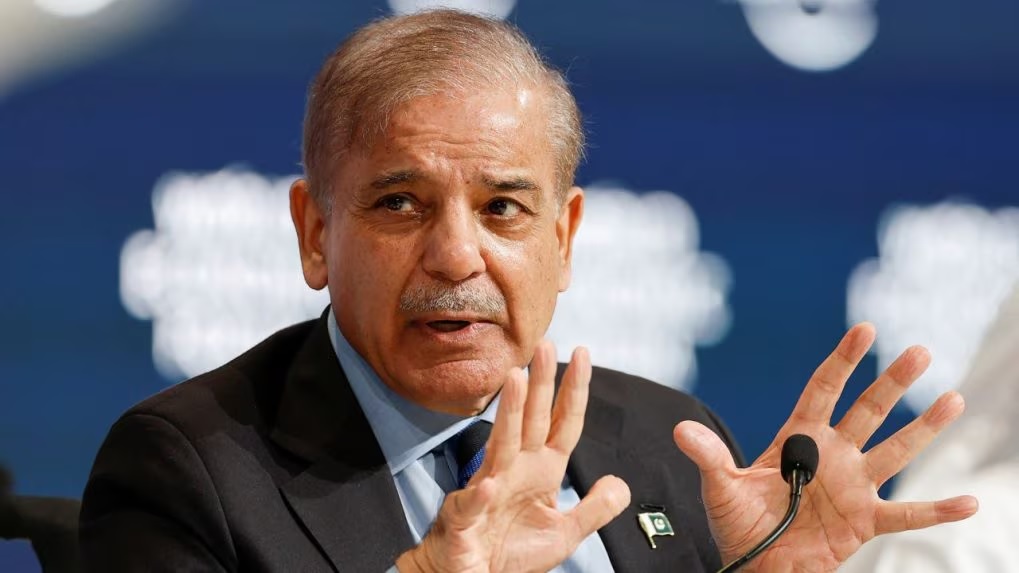 Pakistan Announces 15% Increase in Defence Budget for 2024-25 Amid Economic Crisis
Pakistan Announces 15% Increase in Defence Budget for 2024-25 Amid Economic Crisis
-
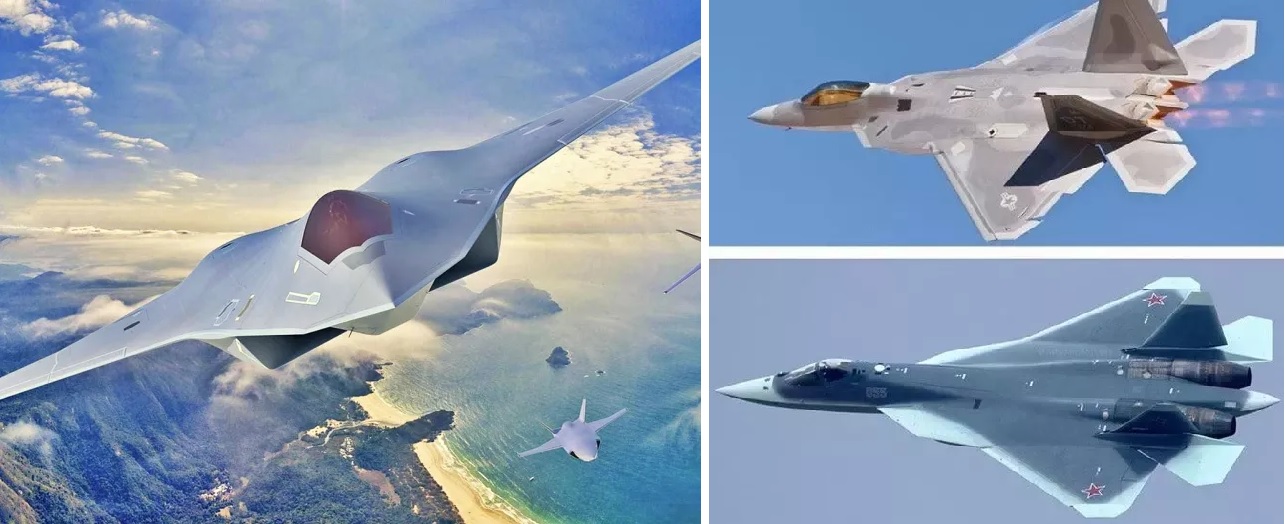 Key Differences Between 5th vs. 6th Generation Fighter Jets
Key Differences Between 5th vs. 6th Generation Fighter Jets
-
 What Would Happen if the USA Left NATO? A Comprehensive Analysis
What Would Happen if the USA Left NATO? A Comprehensive Analysis
-
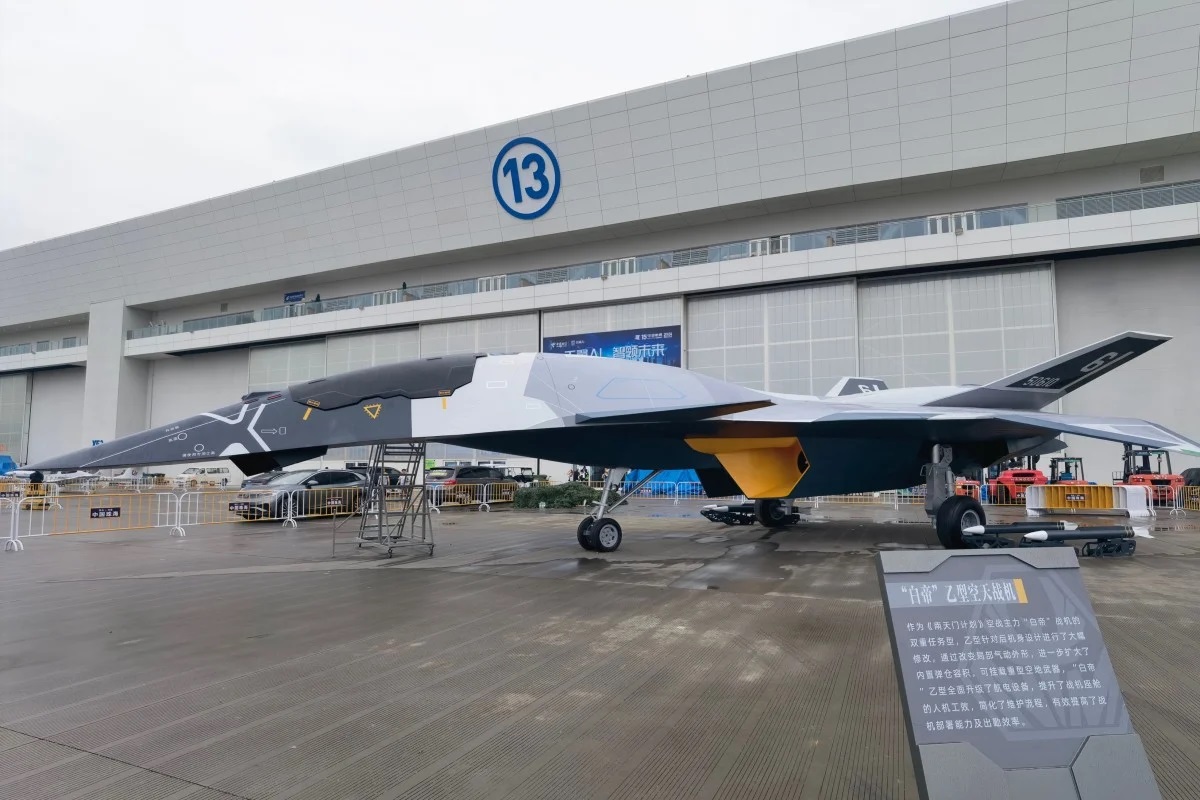 China Unveils the 6th-Generation “Baidi B-Type” Aerospace Fighter Concept
China Unveils the 6th-Generation “Baidi B-Type” Aerospace Fighter Concept
-
 China's Latest DF-31AG ICBM Test: A Strategic Leap in Global Missile Capabilities
China's Latest DF-31AG ICBM Test: A Strategic Leap in Global Missile Capabilities
-
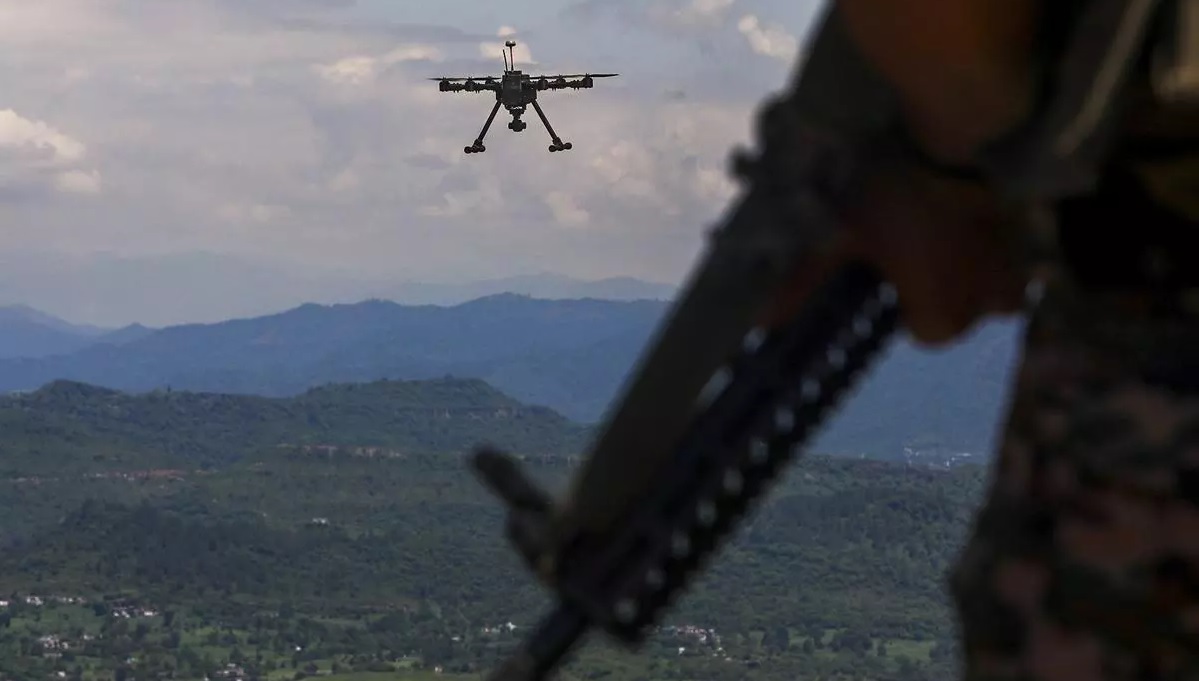 India's Defence Ministry Warns Against Chinese Parts in Military Drones Amid Security Concerns
India's Defence Ministry Warns Against Chinese Parts in Military Drones Amid Security Concerns
Top Trending in 4 Days
-
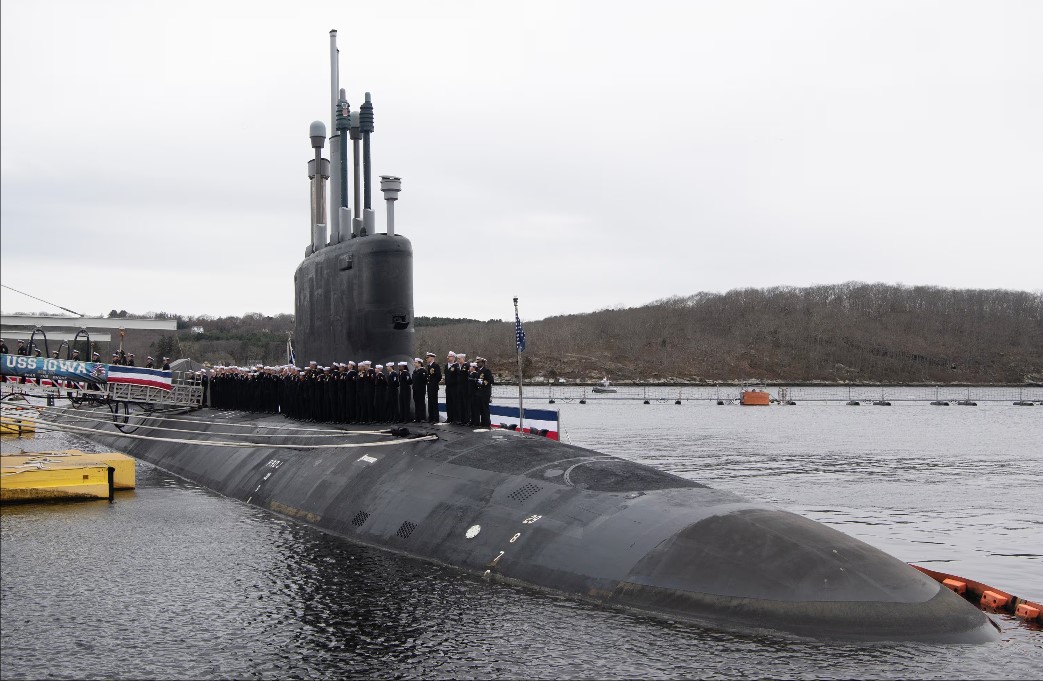 USS Toledo Returns to Service After Major Overhaul, Ready for Future Missions
USS Toledo Returns to Service After Major Overhaul, Ready for Future Missions
-
 Trump Calls PM Modi After Pahalgam Terror Attack, Offers Full Support to India and Condemns Killing of Hindus
Trump Calls PM Modi After Pahalgam Terror Attack, Offers Full Support to India and Condemns Killing of Hindus
-
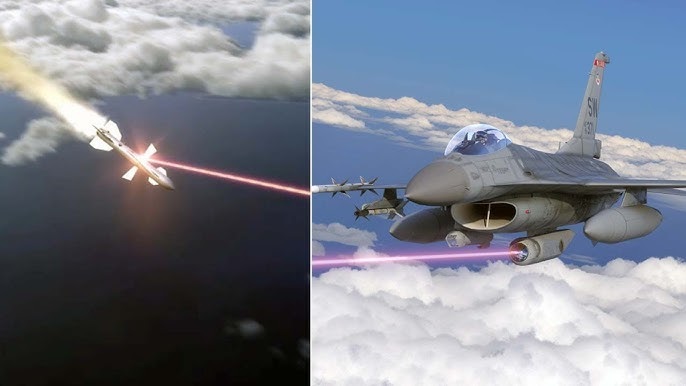 India DRDO Developing Airborne Megawatt Laser to Counter Regional Missile Threats
India DRDO Developing Airborne Megawatt Laser to Counter Regional Missile Threats
-
 Australia Unveils Quantum-Secure Communication Network for GPS-Denied Military Operations
Australia Unveils Quantum-Secure Communication Network for GPS-Denied Military Operations
-
 India to Launch 100–150 New Satellites in 3 Years to Boost National Security: ISRO Chief
India to Launch 100–150 New Satellites in 3 Years to Boost National Security: ISRO Chief
-
 Massive Explosion Rocks Major Russian Ammunition Depot Amid Suspicions of Strike
Massive Explosion Rocks Major Russian Ammunition Depot Amid Suspicions of Strike
-
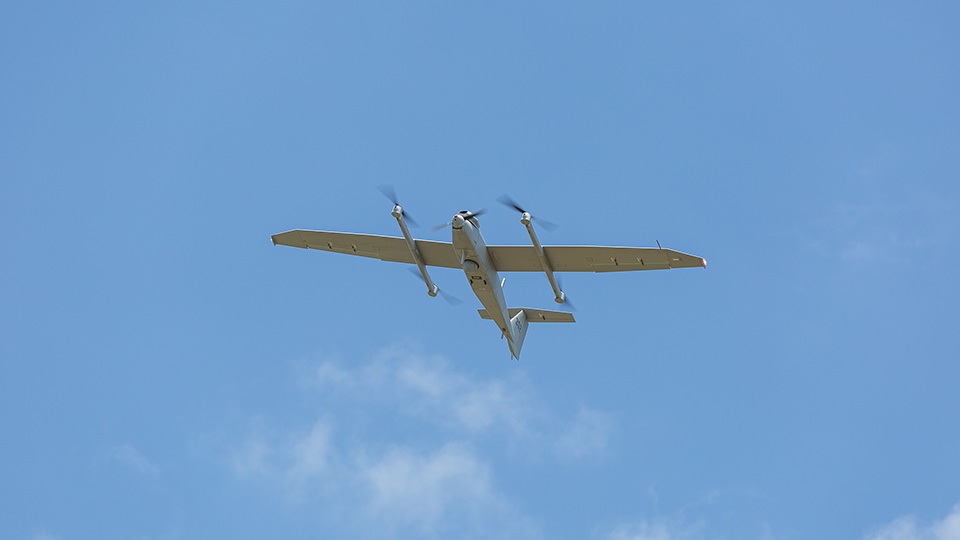 Italy Acquires JUMP 20 Drones from U.S. to Modernize Its Surveillance Capabilities
Italy Acquires JUMP 20 Drones from U.S. to Modernize Its Surveillance Capabilities
-
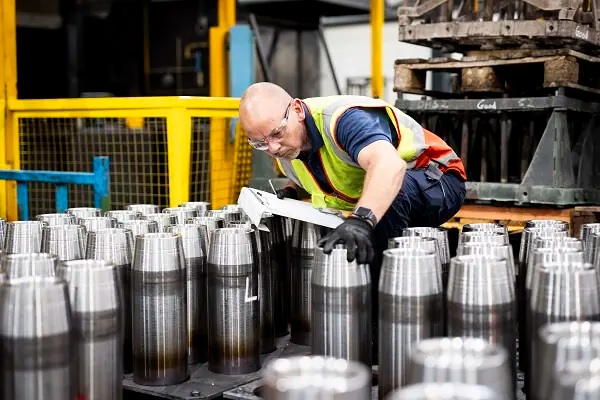 BAE Systems Revolutionizes UK Munitions with New Explosives and Propellants to Strengthen Defence Supply Chain
BAE Systems Revolutionizes UK Munitions with New Explosives and Propellants to Strengthen Defence Supply Chain


